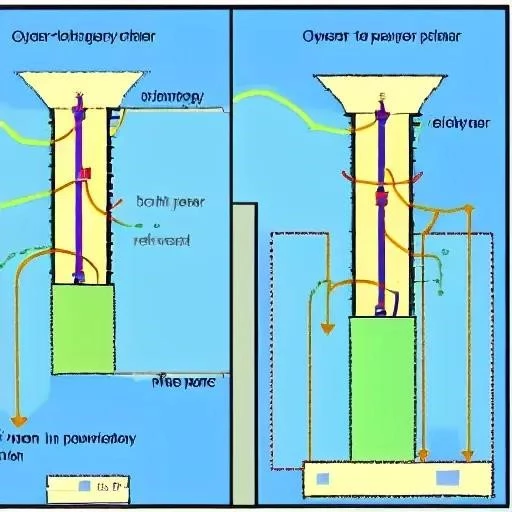For over a century, the rumble and roar of the internal combustion engine (ICE) have been synonymous with automotive prowess, defining an era of unparalleled mobility and industrial innovation. From the pioneering days of Karl Benz to the sleekest supercars of today, the intricate dance of pistons, fuel, and spark has powered our journeys, shaping cities and connecting continents. This marvel of engineering, converting liquid fuel into kinetic energy, became the undisputed king of the road, its dominance so absolute that for generations, the very concept of a “car” was inextricably linked to its growling, gasoline-fed heart. Indeed, the question “do all cars have an internal combustion engine?” would have once been met with a bewildered, resounding “yes,” a testament to its pervasive influence.
Yet, a seismic shift is underway, a profound transformation redefining the very essence of automotive propulsion. What was once an unchallenged paradigm is now rapidly evolving, driven by unprecedented technological advancements, escalating environmental imperatives, and a global demand for cleaner, more efficient transportation solutions. The automotive landscape, once a monolithic kingdom ruled by the ICE, is blossoming into a vibrant ecosystem of diverse powertrains, each offering unique advantages and pathways to a sustainable future; This exciting evolution isn’t merely a fleeting trend; it represents a fundamental re-imagining of how we move, promising a future where choice, innovation, and environmental stewardship drive our vehicles forward.
The following table provides a comprehensive overview of the primary automotive powertrain technologies currently shaping this dynamic industry:
| Powertrain Type | Key Characteristics | Pros | Cons | Market Leaders/Examples |
|---|---|---|---|---|
| Internal Combustion Engine (ICE) | Burns gasoline or diesel to create power; traditional and widely adopted technology. | Established infrastructure, long range, quick refueling, lower initial cost for many models. | Emits greenhouse gases and pollutants, fuel price volatility, mechanical complexity. | Ford, General Motors, Toyota, Volkswagen (historically dominant). |
| Battery Electric Vehicle (BEV) | Powered solely by an electric motor and rechargeable battery pack, no tailpipe emissions. | Zero tailpipe emissions, quiet operation, instant torque, lower running costs (electricity). | Range anxiety, longer refueling (charging) times, higher initial purchase price, battery degradation concerns. | Tesla, BYD, Volkswagen, Hyundai, Rivian. |
| Hybrid Electric Vehicle (HEV) | Combines an ICE with an electric motor and small battery; electric motor assists ICE. | Improved fuel efficiency over ICE, reduced emissions, no range anxiety, self-charging. | Still uses fossil fuels, more complex than pure ICE, less electric-only range than PHEV. | Toyota (Prius), Honda, Lexus. |
| Plug-in Hybrid Electric Vehicle (PHEV) | Features both an ICE and a larger battery that can be externally charged, offering significant electric-only range. | Flexible (electric for daily, ICE for long trips), lower emissions, tax incentives often available. | Higher complexity, still requires charging and gasoline, often heavier than HEVs. | BMW, Volvo, Mitsubishi, Hyundai. |
| Fuel Cell Electric Vehicle (FCEV) | Generates electricity from hydrogen and oxygen through a fuel cell, emitting only water vapor. | Zero tailpipe emissions, quick refueling (minutes), long range, lighter than BEVs for comparable range. | Limited hydrogen fueling infrastructure, high production cost of hydrogen, challenges with hydrogen storage. | Toyota (Mirai), Hyundai (Nexo). |
The Electric Ascent: A Silent Revolution on Wheels
Leading this charge, quite literally, are Battery Electric Vehicles (BEVs), which are rapidly gaining traction globally. Once considered niche curiosities, EVs have matured into formidable contenders, offering exhilarating performance, whisper-quiet operation, and a significantly reduced environmental footprint; The progress in battery technology, specifically in energy density and cost reduction, has been incredibly effective, pushing electric vehicles into the mainstream. Companies like Tesla, Rivian, and BYD have not only captivated consumers with their innovative designs and impressive ranges but have also compelled traditional automakers like Volkswagen and Hyundai to pivot aggressively towards electrification, investing billions into dedicated EV platforms and manufacturing capabilities. This monumental shift is dramatically reshaping the auto industry, promising a cleaner, more efficient future for urban and long-distance travel alike.
The benefits are profoundly impactful. By integrating insights from AI-driven charging networks and renewable energy sources, the entire ecosystem supporting BEVs is becoming more robust and sustainable. Furthermore, the simplicity of electric powertrains, boasting far fewer moving parts than their ICE counterparts, translates into lower maintenance costs and enhanced reliability for consumers. “We are witnessing the democratisation of sustainable mobility,” asserts Dr. Anya Sharma, a leading expert in automotive electrification at the University of California, Berkeley. “The initial hurdles of range anxiety and charging infrastructure are being systematically addressed, paving the way for BEVs to become the predominant form of personal transportation within the next two decades.”
Hybrid’s Prudent Path: Bridging the Transition
While BEVs grab headlines, hybrid electric vehicles (HEVs and PHEVs) continue to play a critically significant role as essential stepping stones in this transition. These ingenious powertrains combine the familiarity of an internal combustion engine with the efficiency benefits of electric motors and batteries, offering a pragmatic solution for drivers not yet ready for a full electric commitment. Toyota, a pioneer in this segment with its iconic Prius, has long championed the hybrid approach, proving its reliability and fuel-saving capabilities over decades. Plug-in hybrids, offering a substantial all-electric range for daily commutes before seamlessly switching to gasoline for longer journeys, represent a compelling compromise, significantly reducing emissions without compromising convenience.
The strategic positioning of hybrids in the market allows consumers to gradually adapt to electrified driving while still benefiting from the established fueling infrastructure. This flexibility is a powerful draw, making hybrids a remarkably effective choice for many families and businesses. As charging infrastructure continues to expand and battery technology advances, the line between hybrids and pure EVs will likely blur further, with each serving distinct but equally vital roles in our journey towards a completely sustainable fleet.
Hydrogen’s Horizon: A Long-Term Vision
Looking further ahead, hydrogen fuel cell electric vehicles (FCEVs) represent another fascinating frontier in automotive propulsion. These vehicles produce electricity onboard by combining hydrogen with oxygen, emitting only water vapor from the tailpipe. Offering quick refueling times comparable to gasoline cars and impressive ranges, FCEVs present a compelling solution for heavy-duty transport and long-haul applications where battery weight and charging times remain significant challenges. Companies like Toyota and Hyundai are actively developing and deploying FCEVs, envisioning a future where a robust “hydrogen economy” complements battery electric infrastructure.
Despite the current limitations of hydrogen production and distribution infrastructure, the potential of FCEVs is immense. Researchers are diligently working on more efficient hydrogen production methods, including green hydrogen derived from renewable energy, which could unlock unprecedented levels of clean mobility. “Hydrogen, when produced sustainably, offers a unique value proposition for sectors where batteries might not be optimal,” explains energy analyst Mark Thompson. “It’s not an ‘either/or’ scenario with BEVs; it’s about building a diverse, resilient, and zero-emission transportation ecosystem where every technology finds its most impactful application.”
The Road Ahead: A Future Powered by Choice and Innovation
The undeniable truth is that the automotive world is no longer solely defined by the internal combustion engine. We are standing at the precipice of a new golden age of automotive innovation, driven by a collective commitment to environmental responsibility and technological advancement. The future of cars is vibrant, diverse, and incredibly exciting, offering consumers an unprecedented array of choices that cater to every need and preference. From the silent, electrifying thrust of a BEV to the efficient versatility of a hybrid or the long-range promise of hydrogen, the options are expanding exponentially.
This evolving landscape is not merely about replacing one engine with another; it’s about fundamentally rethinking our relationship with mobility, embracing sustainability, and propelling humanity towards a cleaner, more connected future. The road ahead is paved with ingenuity, collaboration, and an unwavering optimism that will undoubtedly shape the next century of transportation, proving definitively that the internal combustion engine, while a historic marvel, is now just one star in a rapidly expanding constellation of automotive power.






